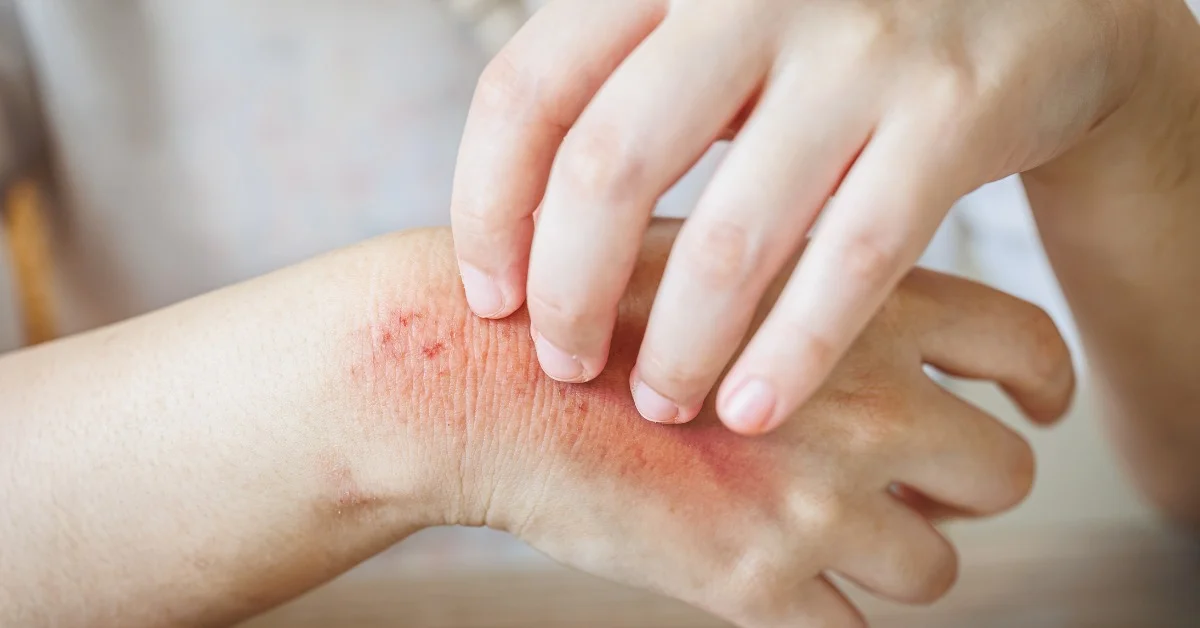What Is Hydrozole Cream Used For? Benefits Explained

Table of Contents
When dealing with fungal skin infections and inflammation, finding an effective treatment is crucial. Hydrozole Cream is a widely used topical medication that combines antifungal and anti-inflammatory properties. But what is Hydrozole used for? This guide covers its benefits, uses, dosage, and potential side effects, helping you understand how it works and when to use it.
What Is Hydrozole Cream?
Hydrozole is a combination medication containing two active ingredients:
- Clotrimazole (1%) – An antifungal agent that treats skin infections caused by fungi.
- Hydrocortisone (1%) – A mild corticosteroid that reduces inflammation, redness, and itching.
This combination makes Hydrozole effective in treating fungal infections accompanied by inflammation and discomfort.
Drug Class
What Is Hydrozole Cream Used For?
Hydrozole is prescribed to treat fungal skin infections with associated inflammation, including:
1. Tinea Infections (Fungal Infections)
- Athlete’s Foot – A common fungal infection affecting the feet.
- Jock Itch – A fungal infection in the groin area.
- Ringworm – A contagious fungal infection causing circular rashes on the skin.
2. Fungal-Infected Dermatitis
- Hydrozole helps relieve redness, itching, and irritation caused by fungal infections.
3. Candidal Skin Infections (Yeast Infections)
- It is used for treating yeast-like fungal infections such as cutaneous candidiasis and fungally infected nappy rash.
4. Mild Eczema and Dermatitis
- Helps relieve itching, inflammation, and discomfort associated with mild cases of eczema and dermatitis when fungal infections are present.
How to Use Hydrozole Cream?
To ensure maximum effectiveness, follow these guidelines:
- Clean and Dry the Affected Area: Wash your hands before and after applying the cream.
- Apply a Thin Layer: Use a small amount of Hydrozole and gently massage it into the affected skin.
- Use Twice Daily: Apply in the morning and evening for 2-4 weeks, or as prescribed by your doctor.
- Avoid Occlusive Dressings: Do not cover the treated area with airtight or waterproof bandages unless directed by your doctor.
- Do Not Overuse: Do not use for more than 7 days unless directed by a healthcare professional.
Missed Dose:
If you forget a dose, apply it as soon as you remember. However, do not double the dose to make up for a missed application.

Precautions & Warnings
When NOT to Use Hydrozole
Avoid using Hydrozole if:
- You are allergic to clotrimazole or hydrocortisone.
- You have a viral or bacterial skin infection (e.g., cold sores, chickenpox).
- You have circulatory issues or itchy skin without a fungal infection.
- You are treating acne or rosacea.
- You have broken or severely damaged skin.
Precautions
- Pregnancy & Breastfeeding: Consult your doctor before using Hydrozole if you are pregnant or nursing.
- Avoid Contact with Eyes, Nose, or Mouth: Rinse thoroughly with water if accidental contact occurs.
- Do Not Apply on Large Skin Areas: Using Hydrozole on extensive areas for prolonged periods can lead to systemic absorption and side effects.
Possible Side Effects of Hydrozole Cream
Like all medications, Hydrozole may cause some side effects. Common side effects include:
- Burning or Stinging Sensation
- Redness and Skin Irritation
- Mild Itching or Dry Skin
- Skin Thinning with Prolonged Use
Rare but Serious Side Effects:
- Allergic Reactions (Severe Itching, Swelling, or Rash)
- Increased Risk of Secondary Infections
- Skin Discoloration or Stretch Marks with Long-Term Use
If you experience severe irritation or allergic reactions, discontinue use and consult a healthcare provider.
Hydrozole Cream Drug & Food Interactions
Drug Interactions
- Inform your doctor if you are taking other medications, as Hydrozole may interact with certain drugs.
- Avoid using other topical corticosteroids or antifungal treatments without medical advice.
Food & Lifestyle Interactions
- Avoid Alcohol: Drinking alcohol while using Hydrozole may increase the risk of side effects.
- No Known Food Restrictions: Hydrozole Cream does not have direct food interactions.
How to Store Hydrozole Cream?
- Store at room temperature (below 25°C).
- Keep away from direct sunlight, heat, and moisture.
- Do not refrigerate.
- Keep out of reach of children.
- Discard expired medication safely.
FAQs About Hydrozole Cream
1. Can Hydrozole be used for diaper rash?
Yes, it is effective for fungally infected nappy rash but should only be used under medical supervision.
2. How long does it take for Hydrozole to work?
Results may be seen within a few days, but treatment should continue for 2-4 weeks to prevent recurrence.
3. Can I use Hydrozole Cream for acne?
No, Hydrozole is not recommended for acne treatment as it does not target acne-causing bacteria.
4. Is Hydrozole Cream available over the counter?
Hydrozole may be available without a prescription in some regions, but it is best to consult a pharmacist or doctor before use.
Conclusion
Hydrozole Cream is an effective treatment for fungal skin infections with inflammation, combining antifungal and anti-inflammatory properties. By understanding its uses, application, precautions, and side effects, you can use it safely and effectively. Always follow medical guidance and avoid prolonged use without consulting a doctor.
For persistent infections or severe symptoms, seek medical advice to explore alternative treatments.




